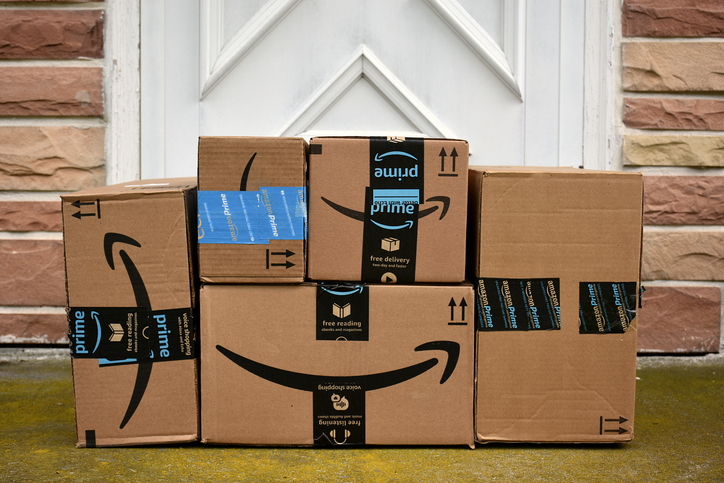Amazon Prime Day officially kicks off this afternoon, but the eCommerce platform got started a bit early this year. Amazon began offering discounts on devices like their Echo, Fire TV, and Fire tablet 12 hours before the official Prime Day kickoff at 3 p.m. EST (12 p.m. PST) Monday.
According to Amazon, shoppers will be able to cash in on more than “one million deals worldwide,” over an extended 36-hour span. Deals span across Amazon-owned products and marketplace offerings from small and mid-sized businesses, Prime Now same-day shipping options, and brick-and-mortar deals at Whole Foods, Amazon Books, Treasure Truck, and other pop-up locations.
Amazon’s also getting a bit more high-tech this year, with new ways to shop on their Amazon app and through voice activation:
– App users can “unlock additional discounts on select Prime Day deals,” by using their AR camera view, product search, or barcode scanner. With AR view, users can “place” an item in their home, for a chance to see if they can access discounts.
– Shoppers can scan barcodes, or search for products within the app to cash in on select deals.
– Amazon Echo owners can use Alexa to track orders, find Prime Day deals and schedule deliveries through voice activation.
For Amazon, incentives for Prime Day are twofold. Steep discounts will naturally help foster conversion, but they’re also selling the benefits of subscribing to the Prime service itself, which comes with a $12.99 monthly fee (or $99 annually). For Prime Day, the gates have been lifted, so to speak. Anyone can participate, as long as they sign up for a free trial.
I can’t help but be reminded of the ‘freemium’ strategies we see used by marketers in the B2B realm. Users have an opportunity to sign in, log on, and take a product of SaaS for a test drive (granted, often in “lite” mode) just to get a feel for the benefits, without making a commitment. In the case of Amazon Prime, their free trial lasts for 30 days.
Last year, the campaign proved successful. In April 2018, CEO Jeff Bezos announced that Amazon had reached 100 million Prime subscribers, as reported by CNN. The company also added more new members on Prime Day than any other day out of the year.
Unlike B2B brands and non-marketplace companies, Amazon has the added benefit of being an eCommerce brand with an array of products to push and merchants to elevate. But on Prime Day, they’re selling their service, too. Annual fees can be a tough selling point, even with the added conveniences like two-day shipping and video streaming that consumers crave today. And now that competitors like Walmart and Target are stepping up their home delivery and in-store curbside pickup options, Amazon may be faced with growing competition from lower-priced alternatives to convenience.
Taylor Schreiner, Director, Adobe Digital Insights, said other retailers are looking at how they can capitalize on the peak in Prime Day shopping interest.
“Other retailers are increasingly jumping on the Amazon Prime Day bandwagon with competing sales of their own,” Schreiner said in an email to DMN. “Retailers will see substantial spikes in online sales during Prime Day due to increased conversion rates. In 2017, large retailers saw a 35 percent increase in sales on Prime Day, and we anticipate new records this year.”
It’s an interesting thought. Although Amazon has set the precedent, that doesn’t mean other big-box retailers are unable to dip their hands in the revenue pot. When it comes to selling subscription services like Prime, the key — and often the challenge — is hooking shoppers and keeping them on board.
“Acquiring a customer is not acquiring a subscriber,” Jim Fosina, CEO, Fosina Marketing Group, said during a recent DMN One on One podcast. “…We’ve seen it that, that if you put a subscription out there and you acquire a customer, there’s a thought pattern that they’ll just come back. Well, they’re not going to ‘just come back.’ You have to engage with that consumer and keep your product or your service top of mind … so that from month to month, or week to week, or quarter to quarter, they want to continue engaging with you.”
Fosina says Amazon’s success with Prime is equal to their investment in developing the value proposition of their service, giving members more of a reason to sign up — and stay on — while justifying rising cost to subscribe.
“All this time is they’ve been developing the Prime service, which is more than just shipping,” Fosina said. “They’ve developed a real customer experience.”








